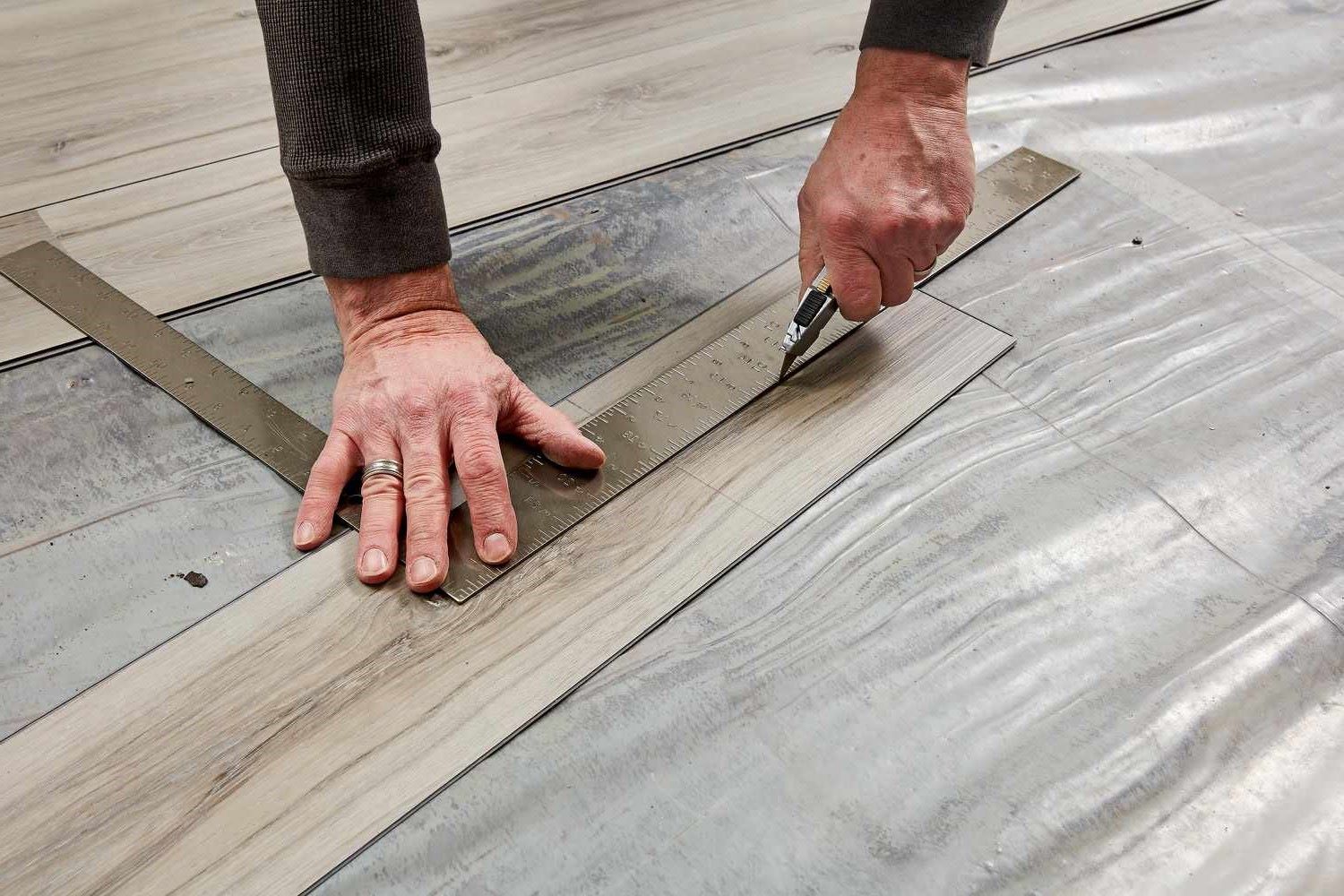Home>Home and Garden>Effective And Affordable Methods For Cutting Rebar Without Costly Tools


Home and Garden
Effective And Affordable Methods For Cutting Rebar Without Costly Tools
Published: February 18, 2024
Discover effective and affordable methods for cutting rebar without costly tools in your home and garden. Save time and money with these DIY solutions.
(Many of the links in this article redirect to a specific reviewed product. Your purchase of these products through affiliate links helps to generate commission for Noodls.com, at no extra cost. Learn more)
Table of Contents
Introduction
When it comes to home improvement or construction projects, cutting rebar is a common task. Rebar, short for reinforcing bar, is a crucial component in concrete structures, providing strength and stability. However, cutting rebar can be a challenging endeavor, especially if you don't have access to specialized and expensive tools. Fortunately, there are effective and affordable methods that can help you tackle this task with ease.
In this comprehensive guide, we will explore various techniques for cutting rebar without the need for costly tools. Whether you're a seasoned DIY enthusiast or a novice looking to take on a new project, these methods will empower you to efficiently cut rebar to the desired lengths, enabling you to proceed with your construction or renovation plans without unnecessary setbacks.
From using a simple hacksaw to employing a versatile angle grinder, we will delve into the step-by-step processes, highlighting the advantages and considerations for each method. Additionally, we will explore the use of a reciprocating saw and the traditional approach of utilizing a cold chisel and hammer. By the end of this guide, you will have a comprehensive understanding of the options available for cutting rebar, allowing you to choose the method that best suits your needs and resources.
Whether you're working on a small-scale project at home or managing a larger construction endeavor, having the knowledge and skills to cut rebar effectively can significantly impact the success and efficiency of your work. So, let's embark on this journey together and discover the practical and cost-effective methods for cutting rebar without costly tools.
Method 1: Using a Hacksaw
Using a hacksaw to cut rebar is a straightforward and accessible method that requires minimal investment in terms of tools. This approach is ideal for small-scale projects or instances where precision and control are paramount. To begin, ensure that you have a sturdy work surface to secure the rebar in place. Using clamps or a vise, firmly secure the rebar to prevent any movement during the cutting process.
Next, equip yourself with a high-quality hacksaw blade specifically designed for cutting metal. Opt for a blade with fine teeth to ensure smooth and precise cuts. Before commencing the cutting process, it's essential to mark the specific points where the rebar needs to be cut. Utilize a marker or a piece of chalk to clearly indicate the cutting lines, ensuring accuracy and consistency.
Once the rebar is securely fastened and the cutting lines are marked, carefully position the hacksaw blade against the rebar, ensuring that it aligns with the marked cutting lines. Apply steady and even pressure as you begin sawing through the rebar. It's crucial to maintain a consistent pace and angle to achieve clean and uniform cuts.
As you progress through the cutting process, periodically apply cutting oil or lubricant to the saw blade and the cutting area. This helps reduce friction, prevents overheating, and prolongs the lifespan of the blade. Additionally, it facilitates smoother cutting motions, enhancing overall efficiency.
When nearing the completion of the cut, exercise caution to prevent any sudden movements that could compromise the integrity of the rebar or result in jagged edges. Once the cut is complete, carefully inspect the edges to ensure they are smooth and free from any protrusions or irregularities.
Using a hacksaw to cut rebar offers a cost-effective and precise solution, particularly for smaller projects or instances where portability and simplicity are essential. By following these steps and exercising patience and precision, you can achieve clean and accurate cuts without the need for expensive or specialized equipment. This method empowers DIY enthusiasts and professionals alike to effectively manage rebar cutting tasks with confidence and efficiency.
Method 2: Using an Angle Grinder
When it comes to cutting rebar with speed and precision, utilizing an angle grinder is a highly effective method that offers versatility and efficiency. An angle grinder, equipped with a cutting wheel suitable for metal, empowers you to swiftly and accurately cut rebar to the desired lengths, making it an ideal choice for various construction and renovation projects.
To begin, ensure that you have the necessary safety equipment, including protective eyewear, gloves, and a dust mask, as the cutting process can generate sparks and metal debris. Additionally, secure the rebar firmly in place using clamps or a vise to prevent any movement during the cutting procedure.
Before initiating the cutting process, carefully mark the specific points on the rebar where the cuts need to be made. Utilize a marker or a piece of chalk to clearly indicate the cutting lines, ensuring accuracy and precision. Once the cutting lines are marked, position the angle grinder with the cutting wheel aligned with the marked lines, ensuring a stable and controlled grip on the tool.
Activate the angle grinder and commence the cutting process, maintaining a steady and consistent motion along the marked lines. It's essential to apply gentle pressure and allow the cutting wheel to gradually penetrate the rebar, ensuring smooth and uniform cuts. Exercise caution and focus on maintaining a steady hand to achieve precise and clean cuts throughout the process.
As you progress through the cutting procedure, periodically pause to allow the cutting wheel and the rebar to cool down, particularly if you notice excessive heat buildup. This helps prevent overheating and ensures the longevity of the cutting wheel. Additionally, applying cutting oil or lubricant to the cutting area can enhance the cutting efficiency and reduce friction, contributing to smoother cutting motions.
Upon completing the cuts, carefully inspect the edges of the rebar to ensure they are smooth and free from any rough or jagged protrusions. If necessary, utilize a metal file to refine the edges and achieve the desired finish. The use of an angle grinder for cutting rebar offers a rapid and precise solution, making it an invaluable tool for various construction and fabrication projects.
By following these steps and prioritizing safety and precision, you can leverage the capabilities of an angle grinder to efficiently and accurately cut rebar without the need for specialized or costly equipment. This method empowers individuals engaged in construction, renovation, and DIY projects to manage rebar cutting tasks with confidence and proficiency.
Method 3: Using a Reciprocating Saw
Utilizing a reciprocating saw for cutting rebar presents a versatile and efficient approach, particularly suitable for projects that demand maneuverability and accessibility. The reciprocating saw, characterized by its oscillating blade motion, offers the advantage of swift and controlled cutting, making it an invaluable tool for various construction and renovation tasks.
To commence the cutting process, it is essential to secure the rebar firmly in place using clamps or a vise, ensuring stability and preventing any unintended movement during the cutting procedure. Additionally, equipping oneself with the necessary safety gear, including protective eyewear and gloves, is crucial to ensure a safe and controlled cutting environment.
Before initiating the cuts, mark the specific points on the rebar where the cutting needs to be performed. Utilize a marker or a piece of chalk to clearly indicate the cutting lines, ensuring precision and accuracy. Once the cutting lines are marked, carefully position the reciprocating saw with the blade aligned with the marked lines, ensuring a stable and controlled grip on the tool.
Activate the reciprocating saw and commence the cutting process, maintaining a steady and consistent motion along the marked lines. The oscillating motion of the saw blade facilitates efficient cutting, allowing for swift progress through the rebar. It is crucial to apply gentle pressure and focus on maintaining a steady hand to achieve precise and clean cuts throughout the process.
As the cutting procedure advances, periodically pause to allow the saw blade and the rebar to cool down, particularly if there is noticeable heat buildup. This precaution helps prevent overheating and ensures the longevity of the saw blade. Additionally, applying cutting oil or lubricant to the cutting area can enhance the cutting efficiency and reduce friction, contributing to smoother cutting motions.
Upon completing the cuts, carefully inspect the edges of the rebar to ensure they are smooth and free from any rough or jagged protrusions. If necessary, utilize a metal file to refine the edges and achieve the desired finish. The use of a reciprocating saw for cutting rebar offers a rapid and controlled solution, making it an invaluable tool for various construction and fabrication projects.
By following these steps and prioritizing safety and precision, individuals engaged in construction, renovation, and DIY projects can effectively leverage the capabilities of a reciprocating saw to manage rebar cutting tasks with confidence and proficiency.
Method 4: Using a Cold Chisel and Hammer
When it comes to cutting rebar without the need for power tools, utilizing a cold chisel and hammer presents a traditional yet effective method that offers simplicity and accessibility. This approach is particularly suitable for small-scale projects or instances where portability and minimal equipment are preferred. The cold chisel, characterized by its hardened steel construction and chisel-shaped tip, serves as a manual cutting tool, while the hammer provides the necessary force to drive the chisel through the rebar.
To initiate the cutting process, it is essential to secure the rebar firmly in place using clamps or a vise, ensuring stability and preventing any unintended movement during the cutting procedure. Additionally, equipping oneself with the necessary safety gear, including protective eyewear and gloves, is crucial to ensure a safe and controlled cutting environment.
Before commencing the cuts, mark the specific points on the rebar where the cutting needs to be performed. Utilize a marker or a piece of chalk to clearly indicate the cutting lines, ensuring precision and accuracy. Once the cutting lines are marked, position the cold chisel against the rebar, ensuring that it aligns with the marked cutting lines.
With the cold chisel in place, carefully strike the chisel's end using the hammer, applying controlled and consistent force to drive the chisel through the rebar. It's essential to maintain a steady and focused approach, ensuring that the chisel penetrates the rebar uniformly along the marked cutting lines. Exercise caution and precision to achieve clean and accurate cuts throughout the process.
As the cutting procedure progresses, periodically reposition the cold chisel along the marked lines to ensure continuous and controlled cutting. This manual method requires patience and attention to detail, as each strike of the hammer contributes to the gradual separation of the rebar. It's important to maintain a consistent rhythm and focus on achieving uniform cuts without causing unnecessary damage to the surrounding areas of the rebar.
Upon completing the cuts, carefully inspect the edges of the rebar to ensure they are smooth and free from any rough or jagged protrusions. If necessary, utilize a metal file to refine the edges and achieve the desired finish. The use of a cold chisel and hammer for cutting rebar offers a traditional yet effective solution, making it a valuable technique for various construction and fabrication projects.
By following these steps and prioritizing safety and precision, individuals engaged in construction, renovation, and DIY projects can effectively leverage the capabilities of a cold chisel and hammer to manage rebar cutting tasks with confidence and proficiency.
Conclusion
In conclusion, the methods outlined for cutting rebar without costly tools offer a diverse range of options catering to different project requirements and resource availability. From the simplicity and accessibility of using a hacksaw to the efficiency and precision of an angle grinder, each method provides a viable solution for managing rebar cutting tasks effectively.
The use of a hacksaw, characterized by its straightforward approach and minimal tool investment, empowers individuals to achieve precise cuts without the need for specialized equipment. This method is particularly suitable for small-scale projects and instances where portability and simplicity are essential. By following the step-by-step process and exercising patience and precision, DIY enthusiasts and professionals can confidently tackle rebar cutting tasks with ease.
Similarly, the utilization of an angle grinder presents a versatile and rapid solution for cutting rebar with speed and accuracy. Equipped with a cutting wheel suitable for metal, the angle grinder offers the advantage of swift and controlled cutting, making it an invaluable tool for various construction and renovation projects. By prioritizing safety measures and focusing on precision, individuals can leverage the capabilities of an angle grinder to efficiently and accurately cut rebar without the need for specialized or costly equipment.
Furthermore, the application of a reciprocating saw introduces a dynamic and efficient approach to cutting rebar, particularly suitable for projects that demand maneuverability and accessibility. The reciprocating saw's oscillating blade motion facilitates swift and controlled cutting, making it an invaluable tool for various construction and renovation tasks. By following the outlined steps and prioritizing safety and precision, individuals engaged in construction, renovation, and DIY projects can effectively leverage the capabilities of a reciprocating saw to manage rebar cutting tasks with confidence and proficiency.
Lastly, the traditional yet effective method of using a cold chisel and hammer provides a manual approach to cutting rebar without the need for power tools. This technique, characterized by its simplicity and accessibility, offers a valuable solution for various construction and fabrication projects. By exercising patience and attention to detail, individuals can effectively leverage the capabilities of a cold chisel and hammer to manage rebar cutting tasks with confidence and proficiency.
In essence, the methods for cutting rebar without costly tools empower individuals to tackle a fundamental aspect of construction and renovation projects with resourcefulness and efficiency. Whether it's the simplicity of a hacksaw, the versatility of an angle grinder, the maneuverability of a reciprocating saw, or the traditional approach of a cold chisel and hammer, each method offers a practical and accessible solution, ensuring that rebar cutting tasks can be managed effectively without the burden of expensive tools.














